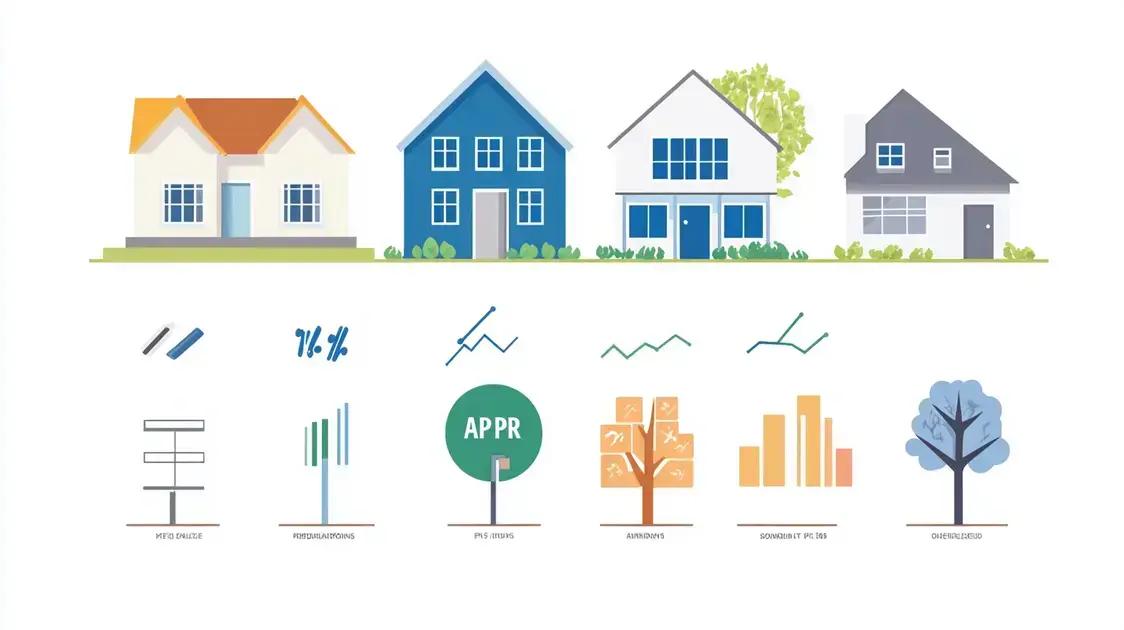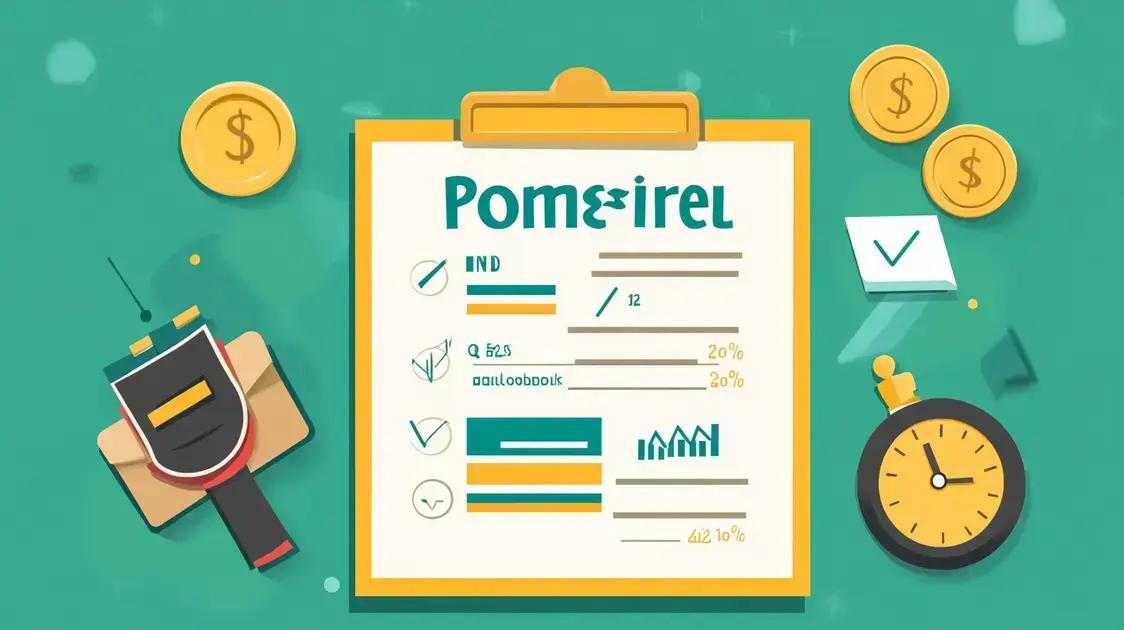Personal loans in 2025 can effectively address various financial needs, including debt consolidation, home improvements, medical expenses, and major purchases.
Understanding features, interest rates, and associated fees is crucial to choosing the right loan for your objectives.
If you’re searching for the best personal loans 2025, you’re on the path to making informed financial choices.
With a variety of options available, it is essential to understand what makes these loans stand out.
Top Features of Best Personal Loans 2025
When looking for the best personal loans 2025, it is crucial to understand the top features that make these loans appealing. Here are some key attributes to consider:
1. Competitive Interest Rates
The best personal loans typically offer competitive interest rates. This can help you save money over the life of the loan.
It’s essential to compare rates from different lenders to ensure you get the best deal available.
2. Flexible Loan Amounts
Many lenders provide a range of loan amounts that cater to various needs.
Whether you require a small sum for a quick expense or a larger loan for a major purchase, flexibility is an important feature.
3. Easy Application Process
The application process for personal loans should be straightforward and convenient.
Many lenders now provide online applications that allow you to get started quickly, often with quick decisions on your application.
4. Fast Funding
Speed is vital when you need money. The best personal loans often offer quick funding, sometimes within 24 hours after approval.
This is ideal for emergencies or urgent expenses.
5. No Collateral Required
Unlike other loans, most personal loans are unsecured, meaning you do not need to put up collateral.
This reduces the risk for borrowers, making it easier to qualify for a loan.
6. Prepayment Options
Look for loans that offer prepayment options without penalties.
This feature allows you to pay off your loan early if you receive extra funds, helping to save on interest costs.
7. Support and Resources
Lastly, the best lenders provide excellent customer support and resources.
This can include financial education, tools to help you make payments, and advice on managing debt.
How to Qualify for Personal Loans in 2025
Qualifying for personal loans in 2025 can be simple if you understand what lenders look for. Here are the main steps to take:
1. Check Your Credit Score
Your credit score is one of the first things lenders will review.
Aim for a score above 650 for better chances at approval. You can check your score for free through various online services.
2. Understand Your Debt-to-Income Ratio
Lenders also consider your debt-to-income (DTI) ratio.
This measures how much of your income goes to paying debts. A DTI below 40% is generally favorable.
3. Have a Steady Income
Demonstrating a reliable source of income is important.
Lenders prefer borrowers with full-time jobs or consistent income streams. Having a job for at least six months can improve your chances.
4. Gather Necessary Documentation
Prepare documents like pay stubs, tax returns, and bank statements.
Having this information ready makes the application process smoother and quicker.
5. Consider a Co-signer
If your credit score or income is lacking, consider finding a co-signer.
A co-signer with good credit can increase your chances of approval and might help secure a better interest rate.
6. Avoid New Debt Before Applying
Avoid taking on new debt in the months leading up to your application.
This can help keep your credit score stable and boost your DTI ratio.
7. Shop Around Before Committing
It’s wise to compare offers from various lenders before you apply.
Not all lenders have the same requirements or rates, so research can help you find the best fit for your needs.
Comparing Interest Rates for Personal Loans

When looking for the best personal loans, interest rates play a crucial role. Understanding how to compare these rates can save you money in the long run.
Here are some important points to consider:
1. Types of Interest Rates
Personal loans generally come with two types of interest rates: fixed and variable.
A fixed rate remains the same for the life of the loan, providing stability.
Meanwhile, a variable rate can change based on market conditions, which may result in lower initial payments but uncertainty in future payments.
2. Annual Percentage Rate (APR)
Look for the Annual Percentage Rate (APR) when comparing loans.
The APR includes not only the interest rate but also any fees associated with the loan. This gives you a clearer idea of the total cost of borrowing.
3. Lender Comparisons
Don’t settle for the first offer. Compare rates from different lenders to find the best deal.
Use online tools and comparison websites to see a range of rates side by side. Ensure you’re looking at similar loan amounts and terms.
4. Credit Score Impact
Your credit score heavily influences the interest rates offered to you.
Higher scores usually qualify for lower rates. Check your credit report and consider improving it before applying for loans to get the best rates available.
5. Loan Terms
The length of your loan also affects the interest. Generally, a longer loan term can lead to a lower monthly payment but a higher total interest payment.
Compare loan terms to find a balance between monthly affordability and total repayment.
6. Special Offers
Some lenders offer special promotions or discounts for new customers.
Look for special offers that may include reduced rates for auto-pay or loyalty discounts for existing customers.
7. Hidden Fees
Always read the fine print for any hidden fees that might not be apparent at first glance.
Look out for origination fees, early repayment penalties, or service charges that could impact the overall cost of the loan.
The Application Process for Personal Loans 2025
The application process for personal loans in 2025 is designed to be straightforward. Here are the main steps you can expect:
1. Research Lenders
Start by researching lenders that offer personal loans.
Use online resources to compare rates, terms, and customer reviews. Make a list of lenders that meet your needs.
2. Gather Documentation
Prepare the necessary documentation. Common documents required include proof of identity, income verification, and information about your debts and assets.
Having these ready will speed up the application process.
3. Check Your Credit Report
Review your credit report for any errors and ensure your credit score is in good shape.
This will help you understand what rates you might qualify for. Correct any mistakes before applying to improve your chances.
4. Complete the Application
Fill out the loan application either online or in person. Make sure to provide accurate information to avoid delays.
This typically includes details about your employment, income, expenses, and requested loan amount.
5. Wait for Approval
After submitting your application, wait for the lender to review your information.
They might request additional documentation during this time. Generally, approvals can be quick, often within 1 to 5 business days.
6. Review Loan Offers
If approved, you will receive one or more loan offers.
Carefully review the terms, including interest rates, fees, and repayment schedules. Ensure you pick an offer that suits you best.
7. Accept the Loan
Once you’ve chosen a loan, sign the loan agreement.
Make sure you understand all the terms before signing. After acceptance, funds will typically be disbursed to your account shortly after.
Understanding Fees Associated with Personal Loans
Understanding the fees associated with personal loans is essential for making informed financial decisions.
Here are the most common fees you may encounter:
1. Origination Fee
The origination fee is a one-time charge that lenders impose for processing your loan application.
This fee usually ranges from 1% to 5% of the total loan amount and is deducted from your loan proceeds.
2. Late Payment Fee
If you miss a payment, many lenders will charge a late payment fee.
This fee can vary by lender but usually falls between $15 and $50. Make sure to pay your loan on time to avoid these extra costs.
3. Prepayment Penalty
Some loans come with a prepayment penalty, which is a fee charged if you pay off your loan early.
Not all lenders impose this fee, so it’s important to ask about it before signing a loan agreement.
4. Application Fee
An application fee may be charged when you apply for a personal loan.
This fee helps cover the lender’s costs to evaluate your creditworthiness. Make sure to check if this fee is refundable or not.
5. Annual Fees
In some cases, lenders may charge an annual fee to keep your loan account open.
This fee is less common for personal loans but can still appear, so inquire about it beforehand.
6. Additional Charges
Depending on the lender, there may be other additional charges such as processing fees or service fees. Always read the fine print to be fully aware of all potential fees.
7. Importance of Fee Awareness
Being aware of these fees can help you better understand the total cost of your loan.
Always compare loan offers based on both interest rates and associated fees to find the best option for your financial situation.
Tips for Choosing the Right Personal Loan

Choosing the right personal loan can make a big difference in your financial health.
Here are some important tips to consider:
1. Assess Your Needs
Before applying for a loan, assess your needs.
Determine how much money you need and the purpose of the loan. This will help you find a loan that fits your specific financial goals.
2. Compare Interest Rates
Always compare interest rates from different lenders.
A lower interest rate can save you money over time. Use online tools to see which lenders offer the best rates for your credit profile.
3. Consider Loan Terms
Look closely at the loan terms. Check the repayment periods, monthly payments, and any other conditions.
Make sure the terms are manageable for your budget before signing anything.
4. Check for Fees
Be aware of any fees associated with the loan.
Fees can include origination fees, late payment fees, or prepayment penalties. Understanding these costs can help you avoid surprises later.
5. Read Reviews
Read reviews and testimonials about lenders. Other borrowers’ experiences can provide insight into customer service and the lender’s reliability.
Look for feedback on how they handle applications and any issues that arise.
6. Look for Flexible Payment Options
Find a loan that offers flexible payment options.
Lenders that allow bi-weekly or monthly payments may make it easier for you to manage your repayment schedule.
7. Think About the Future
Consider how a personal loan fits into your long-term financial plans.
A loan for a necessary expense may be wise, but ensure it won’t hinder your future financial goals.
Common Uses for Personal Loans in 2025
In 2025, personal loans can be used for various purposes. Here are some of the most common uses:
1. Debt Consolidation
Many people use personal loans for debt consolidation.
This involves taking out a loan to pay off multiple debts, simplifying payments and potentially lowering interest rates on outstanding balances.
2. Home Improvements
Personal loans are often utilized for home improvement projects.
Whether it’s a kitchen remodel or necessary repairs, these loans can provide the funds needed to enhance your living space.
3. Medical Expenses
Unplanned medical expenses can arise at any time.
Personal loans can help cover costs that insurance may not fully pay, such as surgeries or treatments you may need urgently.
4. Major Purchases
If you need to make a major purchase, like buying a vehicle or financing a large appliance, a personal loan can help you spread the costs over time rather than paying in full upfront.
5. Travel Costs
Many individuals opt for personal loans to fund travel expenses, such as family vacations or destination weddings.
This can allow you to enjoy experiences without delaying due to budget constraints.
6. Education Expenses
Personal loans can also be used for education expenses, covering tuition, books, and other related costs.
This is helpful for those who might not qualify for traditional student loans.
7. Emergency Expenses
Unexpected emergency expenses can happen, from car repairs to urgent family needs.
A personal loan can provide a financial buffer to manage these situations effectively.
In Summary: Finding the Right Personal Loan
Choosing the best personal loan for your needs in 2025 involves understanding the various features, qualification criteria, and potential fees associated with each option.
Whether you aim to consolidate debt, fund home improvements, or cover unexpected expenses, a personal loan can be a valuable financial tool.
It is essential to evaluate interest rates, repayment terms, and customer feedback when making your decision.
By staying informed and organized, you can navigate the personal loan landscape effectively and choose the loan that best fits your financial goals.
Don’t hesitate to reach out to lenders and ask questions to clarify any doubts you might have.
The right loan can help you achieve your objectives and provide peace of mind.





